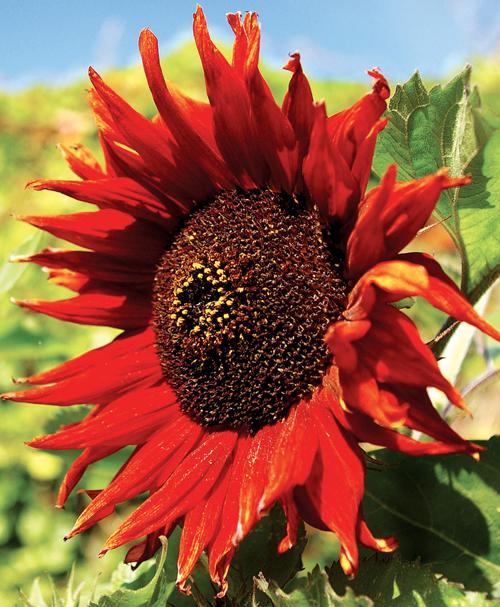Phuket Gardening: The ABCs of plant names

PHUKET: “A” is for arbitrary – which is what the articles that follow will inevitably be. How else to describe in the same breath, an array of plants as different as acalyph (also known as the red cat’s tail) and the golden allamanda.
“A” also represents excellence, so I hope the ensuing choice of plants will reflect that principle. In fact one is instantly spoilt for choice: there are so many plants whose names begin with “A” that they will certainly exceed the scope of one article. And that is without taking account of annuals, a class of plant often under-represented in books on tropical gardening.
The reason for this lack is not hard to find: in temperate climes, many plants only last one year because of the harsh winters, or are taken up and cosseted after flowering to be re-planted the following spring. Clearly, in a climate where the mean temperature rarely drops below the mid-twenties, annuals are often classified as perennials, since they can last several years.
For instance, if you are lucky enough to cultivate geraniums (pelargoniums) successfully in Phuket, they will grow for years and produce large bushy clumps. On the other hand, the globe amaranth or gomphrena globosa, really is an herbaceous annual, even in the tropics, and will sprawl and look messy as it goes past its sell-by date. Better to get rid of the plant and sow again from seed. Nonetheless, with its dense magenta blooms, which last a long time and are often used in Thai floral displays, it is an annual I would not be without.
Other annuals you will encounter here include the helianthus brigade. Perhaps the largest and certainly the most spectacular of annuals, the seeds of sunflowers have long been used as a source of oil and as a delectable snack. It is occasionally grown here commercially, but its chief virtue for the gardener resides in its massive golden flower heads, which sit atop stalks that may be anything up to 14 feet in height. Sunflowers need a rich soil and plenty of water to give their considerable best. But they look dramatic at the back of flower beds or placed along a wall. And nowadays, there are cultivars in shades of red (moulin rouge) and other varieties with many-headed stems. Again easy to grow from seed.
The African marigold (tagetes) is another showy herbaceous annual. Again best grown from readily available packeted seed, tagetes comes in shades of gold, yellow, orange or even white. It has an upright habit, attractive, pinnate (herb-like leaves) and is an ideal bedding plant, since its crimped double blooms are produced more-or-less continually. The smaller French marigold was developed in France, but in fact all tagetes hail from the Americas. An additional bonus: they are said to deter insect pests including parasitic worms.
Like the African marigold, impatiens (or ‘busy lizzie’) is an annual that can straddle both temperate conditions and the hot-house environment of the tropics. Specimens grew happily in a sheltered spot in my London garden; suitably cosseted, they will thrive here too. At present, most garden centers have them on display in hanging baskets or pots, where their multicolored, daisy-like flowers – pink, white, purple and red – look very appealing. But the containers should not be allowed to dry out, for the plants will quickly wilt, nor should they be exposed to the full glare of the tropical sun. A naturalized variety, balsamina, with very fleshy stems, grows wild in Phuket. More upright than the cultivated safari varieties, it has purplish-pink or less commonly scarlet flowers.
Ah! We are still on the letter “A”. Next week will be the turn of the shrubs and small trees.
Tip of the week – Leafy logic: The survival stakes
Leaves come in many shapes, forms and sizes. They are normally made up of a flat, ribbed blade, either narrow (ixora, bamboo) through to very broad versions (fan palm, alocasia), though there are many variations on this theme.
Most conventional leaves are broadly oval in shape (mango, allamanda) but some trees have needle-like leaves (casuarina, Norfolk island pine); others have frond-like foliage (foxtail palm) or fern-like leaves arranged as two rows of small leaflets along a central axis (cassia, delonix regia).
Leaves offer important clues to a plant’s needs. They are the means whereby a plant transpires (a process akin to sweating), and loses water through its pores or stomata. This process is essential for the plant’s growth and survival. These pores are mainly on the undersides of leaves.
If you have a question or a garden that you would like featured, you can email the author here.
Keep checking our online Phuket Lifestyle pages or join our Facebook fan page for regular gardening features and tips.
This article appears in the current (April 27-May 3, 2013) issue of the hard-copy Phuket Gazette newspaper, now on sale at newsstands throughout the island. Digital subscribers may download the full newspaper, this week and every week, by clicking here.
— Patrick Campbell
Latest Thailand News
Follow The Thaiger on Google News:


























